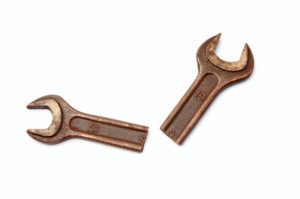If you’ve suffered an injury due to a defective product, you may be entitled to file a liability claim. First, you will want to ensure that you have a case to bring forward. The following criteria will determine your eligibility:
1. You suffered or were injured
2. The product is defective
3. The product caused the injury or suffering
4. The product was used as intended

You will need to prove each criterion to successfully file a defective product injury claim. Let’s look at each criterion to identify how you can prove it.
You suffered or were injured:
To make a defective product injury claim, you must have suffered an actual injury, property loss, or become ill. Almost being injured will not suffice. Document your injury or suffering. Use photo, video, or witness evidence. Seeking medical attention for the injury is a sure way to have evidence. You may have legal grounds to be reimbursed for medical bills.
The product is defective:
You must be able to prove that the injury was caused by a defect in the product.
Manufacturing errors are common defects and can be easily observable. You must prove that the product isn’t made to its intended design.
Some products may be inherently defective in design. The design must not cause unreasonable danger. For example, you probably won’t be able to sue for accidentally cutting your hand with scissors. If the design is dangerous, the company may argue that it is cost-efficient. You may need to prove there is a cost-efficient and safer design to receive compensation.
You may also have a case if there was a warning defect. Products that have some element of danger require a proper and clear warning. If the warning is not clear and proper, you may have grounds to sue. The warning has to detail exactly what injury will occur if used improperly. Dangers considered obvious may not require warnings. For example, a knife does not generally require a warning that it can cut you.
The company may argue that your negligence would have resulted in personal injury even if the product was not defective. An example of this would be if a car accident was caused by breaks that were out of reach to the driver. If the brakes were also defective due to lack of maintenance, negligence may overrule the defect.
The product caused injury or suffering:
When seeking medical attention, make sure to tell the healthcare provider the details of how the product caused the injury. They will document this. Medical records can serve as proof.
Pay attention to recalls. The product may have injured others as well. A personal injury attorney can help you through the product recall process.
The product was used as intended:
If you were using a knife to cut your fingernails and chopped off a finger, you may not have much of a case. However, if you were using the product as it was instructed and intended, you have grounds to take legal action when a personal injury occurs. Insufficient instructions can also serve as proof as you were given unclear directions which resulted in personal injury.
Manufacturers are required to foresee misuse of a product and adequately warn against it.
Once you’ve built up sufficient evidence and feel you have a case, the next step will be to seek out legal counseling. Going with a personal injury attorney is the best way to get the compensation you deserve.
The best personal injury attorney should handle your defective product injury claim. Consult with Guy Levy Law Personal Injury Attorney. At Guy Levy Law, we are experts in defective product injury cases, and we treat our clients like family.


